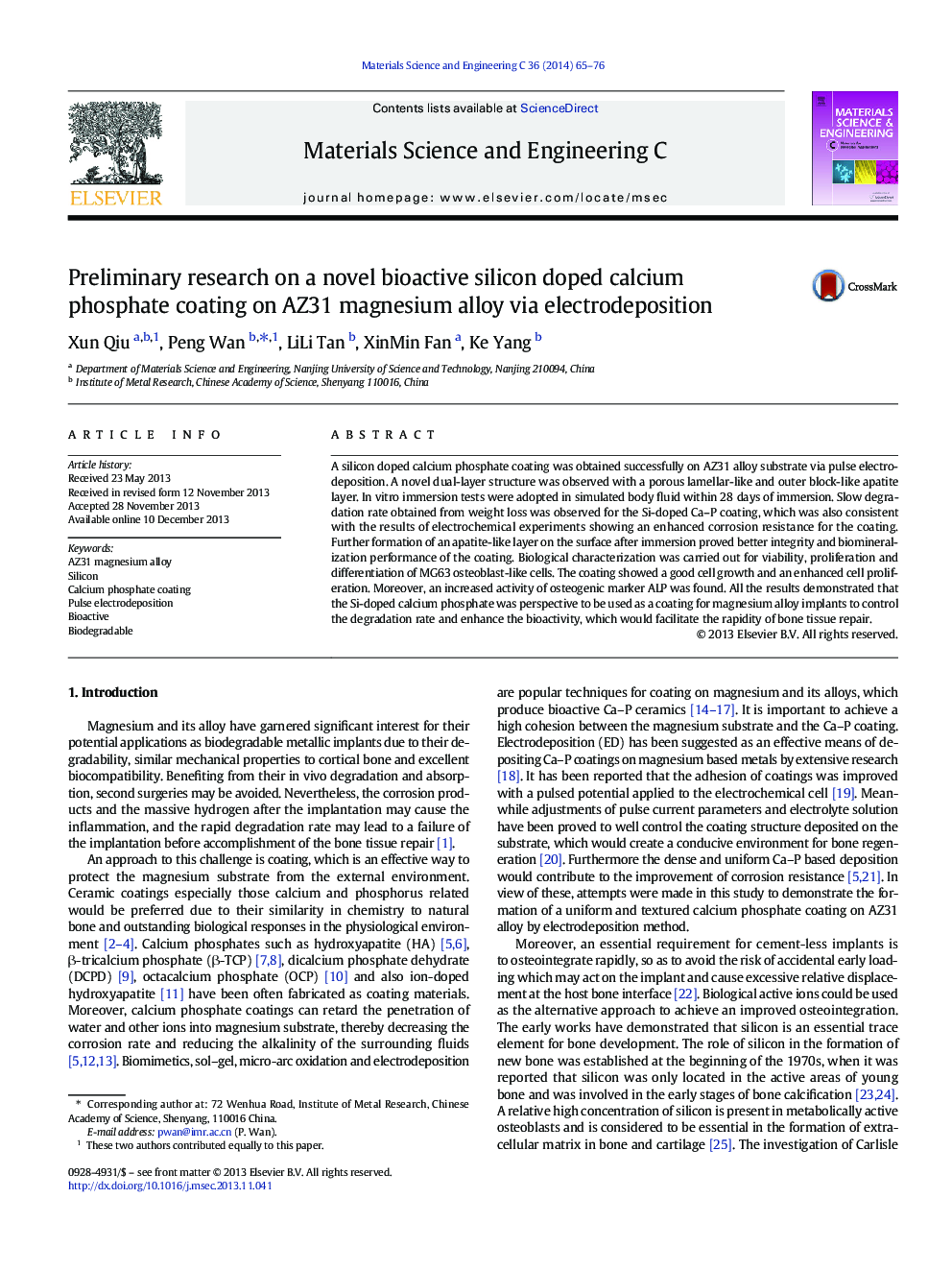| کد مقاله | کد نشریه | سال انتشار | مقاله انگلیسی | نسخه تمام متن |
|---|---|---|---|---|
| 1429222 | 1509185 | 2014 | 12 صفحه PDF | دانلود رایگان |

• A Si-doped calcium phosphate coating was achieved via pulse ED on AZ31 alloy.
• The coating was composed of a porous lamellar-like layer and outer block-like apatite.
• The coating showed slow degradation rate and better biomineralization property.
• The coating improved cell proliferation and activity of osteogenic marker ALP.
A silicon doped calcium phosphate coating was obtained successfully on AZ31 alloy substrate via pulse electrodeposition. A novel dual-layer structure was observed with a porous lamellar-like and outer block-like apatite layer. In vitro immersion tests were adopted in simulated body fluid within 28 days of immersion. Slow degradation rate obtained from weight loss was observed for the Si-doped Ca–P coating, which was also consistent with the results of electrochemical experiments showing an enhanced corrosion resistance for the coating. Further formation of an apatite-like layer on the surface after immersion proved better integrity and biomineralization performance of the coating. Biological characterization was carried out for viability, proliferation and differentiation of MG63 osteoblast-like cells. The coating showed a good cell growth and an enhanced cell proliferation. Moreover, an increased activity of osteogenic marker ALP was found. All the results demonstrated that the Si-doped calcium phosphate was perspective to be used as a coating for magnesium alloy implants to control the degradation rate and enhance the bioactivity, which would facilitate the rapidity of bone tissue repair.
Journal: Materials Science and Engineering: C - Volume 36, 1 March 2014, Pages 65–76